M.E.T.T.S. - Consulting Engineers > White Papers > Power Generation Systems: Matching Capacity, Load and System Requirements for Cleaner, Adequate, Secure, Reliable and Affordable Energy Supply
Power Generation Systems: Matching Capacity, Load and System Requirements for Cleaner, Adequate, Secure, Reliable and Affordable Energy Supply
Dr. Michael C. Clarke, CPEng, FIEAust, FAusIMM, RPEQ
CEO, M.E.T.T.S. Pty. Ltd.
Consulting Engineers, Resource Management and Infrastructure Development
Gold Coast, QLD, AUSTRALIA
Email: metts[at]metts.com.au
Originally published by: Asian Journal on Energy and Environment (ISSN: 1513-4121). As. J. Energy Env. 2009, 10(04), 194-200. Available online at: Asian Journal on Energy and Environment.
Share this page:
Abstract
There is now increasingly community demand for cleaner energy, with this demand including carbon neutral energy.
Across and within different economies, there is need for power generation plants that match specific requirements for capacity and meeting the base, intermediate and peak load requirements. Developing economies have different needs to developed economies, whilst the desire for renewable (carbon neutral) energy has seen the proliferation of small and distributed generation schemes in both developing and developed economies.
Planning is needed to match the desires, with the need and the demand (willingness to pay) of communities for electricity and other forms of energy. Those desires, needs and demands can be met, but there are challenges. This paper examines some of these challenges and various ways by which they could be met.
Keywords: electricity generation, developing countries, DSM.
Introduction
There has been a tendency for base-load power generation plant to increase greatly in size over the last century. In the 1940’s a 100 MWe coal fired power station would have been considered ‘big’ whereas now a 1100 MWe nuclear power station is considered of ‘average’ size today, at least by the vendors of power plants. Big-is-beautiful makes sense in dollars per kilowatt ($/MW) in both a CAPEX and an OPEX context for nuclear, coal and to a lesser extent natural gas, however the sizes of generation plant must match the system requirements in terms of stability and continuity of supply [1]. Individual generation units that are too big for the system are a hazard to the system, and in many developing economies an ‘average’ 1100 MWe nuclear (or coal) power station is too big, that is, it would be much larger than any other single generation unit.
The advent of the desire for distributed renewable generation has brought new challenges to power systems. Wind and solar power units are intermittent whilst biomass powered units tend to be seasonal. Small/micro renewable units can have difficulty in maintaining voltage, harmonics control and frequency and thus create an on-going challenge for synchronisation into the power grid.
For medium sized economies with growing power demand, coupled with an increase in the relative size of the peak demand, the selection of suitable generation plant is becoming more difficult. The fallback has been natural gas fired, open cycle, gas turbine units, units that can come on-line in minutes. These units, as well as helping to meet peak demand, can also be brought in to meet intermediate demand and occasionally base demand, but at a cost. Since much of developing Asia now to source natural gas from international pipelines or as LNG, they now have to pay the 'international' price that has climbed to around $US7/GJ. The tightening of supply once the 2008/2009 recession is over could see LNG/internationally traded gas move towards an international parity price that could soon be $US10/GJ which translates to a price of electricity of >¢US25/kWh using open cycle low efficiency plant.
A typical generation, transmission and distribution system is shown in Figure 1. For many developing countries one of the weaknesses of the system is the long low voltage transmission/distribution system that services rural areas. This system with its increasing reliance on distributed generation has weaknesses that translate into poor power quality and unreliability of supply.
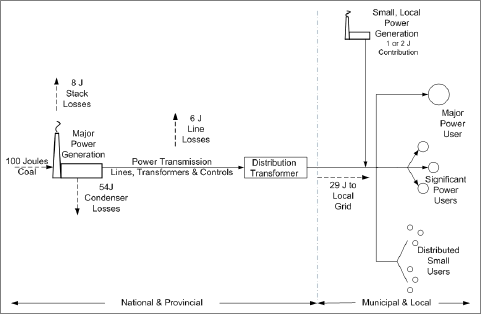
Figure 1. A Power Generation System with losses
Mixing and Matching for the Future
The big nuclear plants such as the European Pressurised Reactor (EPR) at 1600 MWe have little relevance to much of developing Asia. Nuclear plants of 400 – 500 MWe do exist, and these units as single units or more likely as multiple units in a power generation pod do make sense. They could be placed in coastal situations (to take advantage of seawater cooling) along the coastlines of S. E. Asia and S. Asia with the proviso that the water temperatures should not become excessively high because of too restricted local flows. High Temperature Gas Reactors (HTGRs) of less than 200 MWe may become available in the next ten years, and these could be built in generation pods of say three or more and provide great flexibility.
Coal fired generation plants with single units capped at 500 MWe make good sense. Coal fired units of say 200 MWe also have a place, especially if they can be fired with colliery wastes or low rank coal. Coal fired Integrated Gasification Combined Cycle (IGCC) power generation plants also have great promise; IGCC plants have production flexibility if they incorporate gas storage facilities that can be used for meeting peak and intermediate loads.
Nuclear power generation is essentially best kept for meeting base load demand. Two exceptions are the use of HTGRs at less than Maximum Continuous Rating (MCR) and the use of nuclear energy to produce hydrogen that can be stored and used for peak generation as required. (Note: Some useful recent research has been undertaken in Australia on practical hydogen storage, however the systems have to be proved on an industrial scale [2].)
Meeting Future Demand for Liquid Transport Fuels
The possibility is that the Peak Oil Scenario (POS) may be about to descend on our societies; the certainty is that at some time we will have to deal with POS. The only way we presently have to deal and mitigate the effects of POS is through the conversion of coal, lignite or natural gas into liquid fuels. Coal being the most plentiful of the fossil fuels is the prime target for conversion with a number of conversion routes being possible. One route is the gasification of coal to produce synthesis gas, then the conversion of that gas into synthetic petroleum products. This process is carried out in South Africa where around 180,000 bbls/day of liquid fuel is produced. Figure 2 is a coal-to-liquids (CTL) schematic.
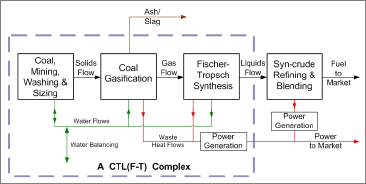
Figure 2. A GTL complex, plus refining facility with co-generation of electricity
In the conversion of coal to liquid fuels there are opportunities for the co-generation of significant electricity. For a 50,000 bbl/day CTL plant up to 450 MWe (as base and peak power) can be co-generated.
The ability of nuclear energy to produce transport fuels at his stage requires the development of a complete hydrogen technology, which will include production, purification, storage and utilisation in motive power units in a safe and efficient manner. Hydrogen based technologies still have to be developed to achieve such a scenario.
The Carbon Question
The coal fired power generation industry has ‘cleaned up its act’ in terms of emissions of sulphur oxides SOx, nitrogen oxides NOx and particulates ROx. Coal mining, washing and transport have greatly improved their environmental performance. In developed countries the industry meets OH&S standards and is essentially safe and healthy. It is the question of carbon emissions that is the elephant in the room for the coal fired power generation industry.
Greenhouse Gas (GHG) induced Global Warming (GW) is a politically proven fact; however, it is only a scientific hypothesis that has a long way to go to be a scientifically ‘proven fact’. Nonetheless, GHG causing GW has to be acknowledged in terms of its ramifications on project acceptance and funding and thus financial risk management.
The coal fired power generation industry and new coal based liquid fuels production is faced with the need to bury carbon or suffer the possibility of being severely restricted in future rollout. Carbon burial (geo-sequestration) is not a proven technology, is not properly costed and in fact may be very hazardous. In reality it is the carbon question that has reopened the door for nuclear energy.
Energy Systems: Present and Future
Predicting the future is very hazardous for reputations. Coal fired and nuclear power generation presently have the following energy balances and efficiencies shown in Figures 3a and 3b respectively.
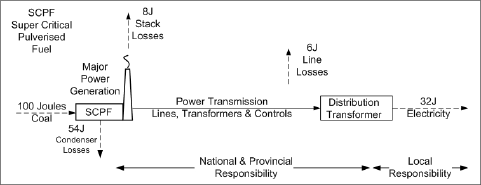
Figure 3a. Super Critical Coal Fired Power Generation energy flows.
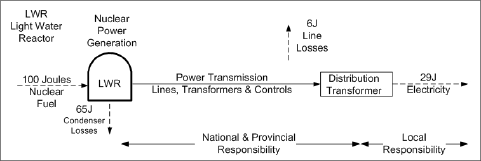
Figure 3b. Light Water Nuclear Power Generation energy flows
The systems above are very similar in terms of efficiencies and energy flows. The coal unit has a significant energy loss up the stack and very large losses in the condenser. The nuclear system has even larger losses in the condenser which is an indication of the relative low working core temperatures of light water reactors, that being generally <400°C. The coal unit could be an Ultra Super Critical Pulverised Fuel Unit and achieve a few extra points of efficiency, but at additional CAPEX and possibly extra OPEX.
Post generation line losses, that are given a nominal value of 6 Joules, can be reduced using bigger conductors, increased line voltages and advanced materials in transformers and switching. The cost of reducing line losses can be significant, especially if transmission systems’ major line voltages are increased to 500 kV from say 275 kV.
Large generation plants are major infrastructure assets and as such come under national or provincial regulation. Although these units are often privately owned they must meet the operating standards as set forth in national legislation and regulation. They are major parts of the national or regional grids and are operated in a matrix of other generators with their electricity product being wheeled through the grid as demand dictates.
The question is, can we progress the situation and improve generating efficiencies? The answer is yes, if we use the power generation systems represented in the schematics, Figures 4a and 4b.
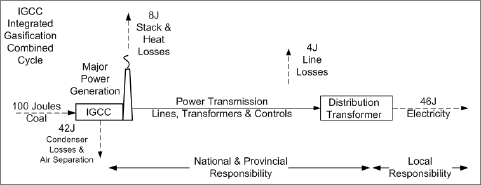
Figure 4a. IGCC Coal Fired Power Generation energy flows
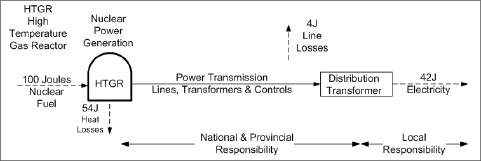
Figure 4b. HTGR Nuclear Power Generation energy flows
The IGCC system shown has an overall efficiency of 50% ‘at the fence’. It would include an efficient air separation unit (to produce oxygen) that may be Ion Transport Membrane technology, would be located on the coast (for access to seawater for cooling), and be of a size where heat recovery from all sub-systems could be maximised. The HGTR would likely be a Brayton cycle system, would be located on the coast and could include heat recovery with that heat being used in Rankine cycle. The inclusion of a Rankine cycle secondary generation system could take the overall efficiency of 46% ‘at the fence’ to over 50%.
Carbon Footprints, Now and in the Future
The Australian Coal Association, through their Coal In Sustainable Society programme, produced the following GHG emissions for various types of generation [3].
Notes: The carbon footprint from the nuclear LWR plant is from running the stand-by diesels and from embedded carbon in construction materials.
IGCC plants are still in the late development stage, with major demonstration plants in existence but no production units in operation. If it is desired to facilitate carbon capture in IGCC operations the plant efficiencies will be reduced from around 50% to the mid thirties since the captive use of electricity in the IGCC plants will significantly increase with Carbon Capture and Storage (CCS).
HTGR reactors were built and successfully run in the 1950s and 60s. They need to be reinvented with new fuelling options including significant fuel recycling.
Energy Efficiency at the User/Distribution Level
Post the major distribution transformers there are users of electricity and (increasingly) some small generators. The small generators may include individual dwellings that have solar photovoltaic panels that feed surplus power into the local grid, biomass power systems and wind turbines.
The users can reduce their demand for electricity by using Demand Side Management (DSM) that include energy efficiency measures [4]. The savings at the user end are, however, relatively smaller than what is possible at the big generation end.
Care is needed in the acceptance of excessive locally generated electricity that is derived from very small and hard to control sources. Distributed generation plants that either have captive (non grid) loads or are of a size that can be integrated into the local grid (say > 10 MWe) do have a place.
Conclusion
There are good options for new power generation systems that will bring new efficiencies of raw fuel conversion into electricity. There are options for the production of new transport fuels from coal (and possibly from nuclear energy if the ‘hydrogen cycle’ can be completed).
Greater efficiencies in generation and transmission can bring great benefits to an energy hungry world. The efficiencies will be severely reduced for coal fired generation if large-scale carbon sequestration is proven to be possible and becomes a necessity. In this case nuclear power generation will become not only desirable but also a necessity.
References
1. Work, Daniel (2009). Introduction to Power Systems Operation in a Nuclear Environment, ANAQ Presentation, Brisbane, April 28.
2. Ng, Jeffrey (2009). Energy Storage with Hydrogen, Hydrexia, Australian Innovation Seminar, Brishabne, May 21.
3. Wibberley, Louis (2002). LCA Analyses of Power Generation Systems, CISS.
4. Clarke, Michael C. (2009). Energy efficiency: scope, benefits, synergies and pitfalls for the developing world. Asian Journal on Energy and Environment, Vol. 10, No. 3, pp 133-141.
Notes and Terminology
Note A: The carbon footprint of 650 kg/MWh is recalculated using a higher efficiency than the CISS example and does not include carbon capture.
Terminology: "at the fence" refers to energy efficiencies calculated at the boundaries of a system; in this case the boundary of a power generation station.
NOTE:
You are welcome to quote up to a maximum of three paragraphs from the above white paper, on condition that you include attribution to this website, as follows:
SOURCE: M.E.T.T.S. Pty. Ltd. Website http://www.metts.com.au
Share this page:
Author: Michael C Clarke
(Michael C Clarke on Google+)
Abstract
There is now increasingly community demand for cleaner energy, with this demand including carbon neutral energy.
Across and within different economies, there is need for power generation plants that match specific requirements for capacity and meeting the base, intermediate and peak load requirements. Developing economies have different needs to developed economies, whilst the desire for renewable (carbon neutral) energy has seen the proliferation of small and distributed generation schemes in both developing and developed economies.
Planning is needed to match the desires, with the need and the demand (willingness to pay) of communities for electricity and other forms of energy. Those desires, needs and demands can be met, but there are challenges. This paper examines some of these challenges and various ways by which they could be met.
Keywords: electricity generation, developing countries, DSM.
Introduction
There has been a tendency for base-load power generation plant to increase greatly in size over the last century. In the 1940’s a 100 MWe coal fired power station would have been considered ‘big’ whereas now a 1100 MWe nuclear power station is considered of ‘average’ size today, at least by the vendors of power plants. Big-is-beautiful makes sense in dollars per kilowatt ($/MW) in both a CAPEX and an OPEX context for nuclear, coal and to a lesser extent natural gas, however the sizes of generation plant must match the system requirements in terms of stability and continuity of supply [1]. Individual generation units that are too big for the system are a hazard to the system, and in many developing economies an ‘average’ 1100 MWe nuclear (or coal) power station is too big, that is, it would be much larger than any other single generation unit.
The advent of the desire for distributed renewable generation has brought new challenges to power systems. Wind and solar power units are intermittent whilst biomass powered units tend to be seasonal. Small/micro renewable units can have difficulty in maintaining voltage, harmonics control and frequency and thus create an on-going challenge for synchronisation into the power grid.
For medium sized economies with growing power demand, coupled with an increase in the relative size of the peak demand, the selection of suitable generation plant is becoming more difficult. The fallback has been natural gas fired, open cycle, gas turbine units, units that can come on-line in minutes. These units, as well as helping to meet peak demand, can also be brought in to meet intermediate demand and occasionally base demand, but at a cost. Since much of developing Asia now to source natural gas from international pipelines or as LNG, they now have to pay the 'international' price that has climbed to around $US7/GJ. The tightening of supply once the 2008/2009 recession is over could see LNG/internationally traded gas move towards an international parity price that could soon be $US10/GJ which translates to a price of electricity of >¢US25/kWh using open cycle low efficiency plant.
A typical generation, transmission and distribution system is shown in Figure 1. For many developing countries one of the weaknesses of the system is the long low voltage transmission/distribution system that services rural areas. This system with its increasing reliance on distributed generation has weaknesses that translate into poor power quality and unreliability of supply.

Figure 1. A Power Generation System with losses
Mixing and Matching for the Future
The big nuclear plants such as the European Pressurised Reactor (EPR) at 1600 MWe have little relevance to much of developing Asia. Nuclear plants of 400 – 500 MWe do exist, and these units as single units or more likely as multiple units in a power generation pod do make sense. They could be placed in coastal situations (to take advantage of seawater cooling) along the coastlines of S. E. Asia and S. Asia with the proviso that the water temperatures should not become excessively high because of too restricted local flows. High Temperature Gas Reactors (HTGRs) of less than 200 MWe may become available in the next ten years, and these could be built in generation pods of say three or more and provide great flexibility.
Coal fired generation plants with single units capped at 500 MWe make good sense. Coal fired units of say 200 MWe also have a place, especially if they can be fired with colliery wastes or low rank coal. Coal fired Integrated Gasification Combined Cycle (IGCC) power generation plants also have great promise; IGCC plants have production flexibility if they incorporate gas storage facilities that can be used for meeting peak and intermediate loads.
Nuclear power generation is essentially best kept for meeting base load demand. Two exceptions are the use of HTGRs at less than Maximum Continuous Rating (MCR) and the use of nuclear energy to produce hydrogen that can be stored and used for peak generation as required. (Note: Some useful recent research has been undertaken in Australia on practical hydogen storage, however the systems have to be proved on an industrial scale [2].)
Meeting Future Demand for Liquid Transport Fuels
The possibility is that the Peak Oil Scenario (POS) may be about to descend on our societies; the certainty is that at some time we will have to deal with POS. The only way we presently have to deal and mitigate the effects of POS is through the conversion of coal, lignite or natural gas into liquid fuels. Coal being the most plentiful of the fossil fuels is the prime target for conversion with a number of conversion routes being possible. One route is the gasification of coal to produce synthesis gas, then the conversion of that gas into synthetic petroleum products. This process is carried out in South Africa where around 180,000 bbls/day of liquid fuel is produced. Figure 2 is a coal-to-liquids (CTL) schematic.

Figure 2. A GTL complex, plus refining facility with co-generation of electricity
In the conversion of coal to liquid fuels there are opportunities for the co-generation of significant electricity. For a 50,000 bbl/day CTL plant up to 450 MWe (as base and peak power) can be co-generated.
The ability of nuclear energy to produce transport fuels at his stage requires the development of a complete hydrogen technology, which will include production, purification, storage and utilisation in motive power units in a safe and efficient manner. Hydrogen based technologies still have to be developed to achieve such a scenario.
The Carbon Question
The coal fired power generation industry has ‘cleaned up its act’ in terms of emissions of sulphur oxides SOx, nitrogen oxides NOx and particulates ROx. Coal mining, washing and transport have greatly improved their environmental performance. In developed countries the industry meets OH&S standards and is essentially safe and healthy. It is the question of carbon emissions that is the elephant in the room for the coal fired power generation industry.
Greenhouse Gas (GHG) induced Global Warming (GW) is a politically proven fact; however, it is only a scientific hypothesis that has a long way to go to be a scientifically ‘proven fact’. Nonetheless, GHG causing GW has to be acknowledged in terms of its ramifications on project acceptance and funding and thus financial risk management.
The coal fired power generation industry and new coal based liquid fuels production is faced with the need to bury carbon or suffer the possibility of being severely restricted in future rollout. Carbon burial (geo-sequestration) is not a proven technology, is not properly costed and in fact may be very hazardous. In reality it is the carbon question that has reopened the door for nuclear energy.
Energy Systems: Present and Future
Predicting the future is very hazardous for reputations. Coal fired and nuclear power generation presently have the following energy balances and efficiencies shown in Figures 3a and 3b respectively.

Figure 3a. Super Critical Coal Fired Power Generation energy flows.

Figure 3b. Light Water Nuclear Power Generation energy flows
The systems above are very similar in terms of efficiencies and energy flows. The coal unit has a significant energy loss up the stack and very large losses in the condenser. The nuclear system has even larger losses in the condenser which is an indication of the relative low working core temperatures of light water reactors, that being generally <400°C. The coal unit could be an Ultra Super Critical Pulverised Fuel Unit and achieve a few extra points of efficiency, but at additional CAPEX and possibly extra OPEX.
Post generation line losses, that are given a nominal value of 6 Joules, can be reduced using bigger conductors, increased line voltages and advanced materials in transformers and switching. The cost of reducing line losses can be significant, especially if transmission systems’ major line voltages are increased to 500 kV from say 275 kV.
Large generation plants are major infrastructure assets and as such come under national or provincial regulation. Although these units are often privately owned they must meet the operating standards as set forth in national legislation and regulation. They are major parts of the national or regional grids and are operated in a matrix of other generators with their electricity product being wheeled through the grid as demand dictates.
The question is, can we progress the situation and improve generating efficiencies? The answer is yes, if we use the power generation systems represented in the schematics, Figures 4a and 4b.

Figure 4a. IGCC Coal Fired Power Generation energy flows

Figure 4b. HTGR Nuclear Power Generation energy flows
The IGCC system shown has an overall efficiency of 50% ‘at the fence’. It would include an efficient air separation unit (to produce oxygen) that may be Ion Transport Membrane technology, would be located on the coast (for access to seawater for cooling), and be of a size where heat recovery from all sub-systems could be maximised. The HGTR would likely be a Brayton cycle system, would be located on the coast and could include heat recovery with that heat being used in Rankine cycle. The inclusion of a Rankine cycle secondary generation system could take the overall efficiency of 46% ‘at the fence’ to over 50%.
Carbon Footprints, Now and in the Future
The Australian Coal Association, through their Coal In Sustainable Society programme, produced the following GHG emissions for various types of generation [3].
| Generation System | GHG Emissions kg CO2-e/MWh |
| SCPF/USCPF | 842 (Supercritical), 716 (UltraSCritical) |
| Nuclear - LWR | 40·3 |
| IGCC | 650 [Note A] |
Notes: The carbon footprint from the nuclear LWR plant is from running the stand-by diesels and from embedded carbon in construction materials.
IGCC plants are still in the late development stage, with major demonstration plants in existence but no production units in operation. If it is desired to facilitate carbon capture in IGCC operations the plant efficiencies will be reduced from around 50% to the mid thirties since the captive use of electricity in the IGCC plants will significantly increase with Carbon Capture and Storage (CCS).
HTGR reactors were built and successfully run in the 1950s and 60s. They need to be reinvented with new fuelling options including significant fuel recycling.
Energy Efficiency at the User/Distribution Level
Post the major distribution transformers there are users of electricity and (increasingly) some small generators. The small generators may include individual dwellings that have solar photovoltaic panels that feed surplus power into the local grid, biomass power systems and wind turbines.
The users can reduce their demand for electricity by using Demand Side Management (DSM) that include energy efficiency measures [4]. The savings at the user end are, however, relatively smaller than what is possible at the big generation end.
Care is needed in the acceptance of excessive locally generated electricity that is derived from very small and hard to control sources. Distributed generation plants that either have captive (non grid) loads or are of a size that can be integrated into the local grid (say > 10 MWe) do have a place.
Conclusion
There are good options for new power generation systems that will bring new efficiencies of raw fuel conversion into electricity. There are options for the production of new transport fuels from coal (and possibly from nuclear energy if the ‘hydrogen cycle’ can be completed).
Greater efficiencies in generation and transmission can bring great benefits to an energy hungry world. The efficiencies will be severely reduced for coal fired generation if large-scale carbon sequestration is proven to be possible and becomes a necessity. In this case nuclear power generation will become not only desirable but also a necessity.
References
1. Work, Daniel (2009). Introduction to Power Systems Operation in a Nuclear Environment, ANAQ Presentation, Brisbane, April 28.
2. Ng, Jeffrey (2009). Energy Storage with Hydrogen, Hydrexia, Australian Innovation Seminar, Brishabne, May 21.
3. Wibberley, Louis (2002). LCA Analyses of Power Generation Systems, CISS.
4. Clarke, Michael C. (2009). Energy efficiency: scope, benefits, synergies and pitfalls for the developing world. Asian Journal on Energy and Environment, Vol. 10, No. 3, pp 133-141.
Notes and Terminology
Note A: The carbon footprint of 650 kg/MWh is recalculated using a higher efficiency than the CISS example and does not include carbon capture.
Terminology: "at the fence" refers to energy efficiencies calculated at the boundaries of a system; in this case the boundary of a power generation station.
NOTE:
You are welcome to quote up to a maximum of three paragraphs from the above white paper, on condition that you include attribution to this website, as follows:
SOURCE: M.E.T.T.S. Pty. Ltd. Website http://www.metts.com.au
Share this page:
Author: Michael C Clarke
(Michael C Clarke on Google+)
M.E.T.T.S. Pty. Ltd. - Consulting Engineers PO Box 843, Helensvale QLD 4212, Australia TEL: (07) 5502 8093 • (Int'l) +61-7-5502 8093 EMAIL: metts[at]metts.com.au Copyright • Privacy • Terms of Use © 1999-2014 M.E.T.T.S. Pty. Ltd. All Rights Reserved. |
.

